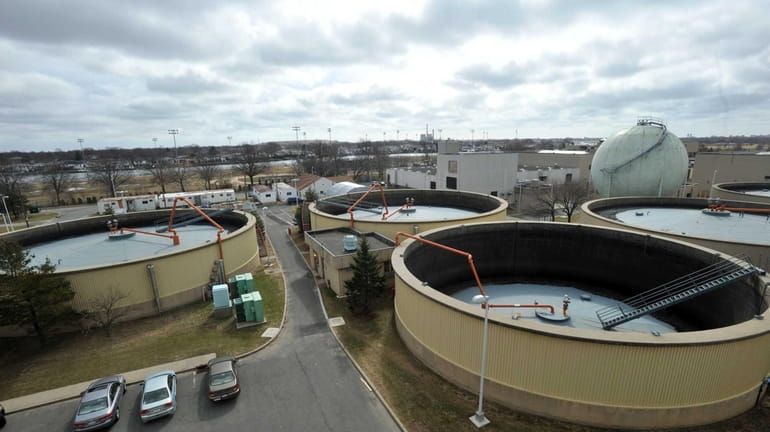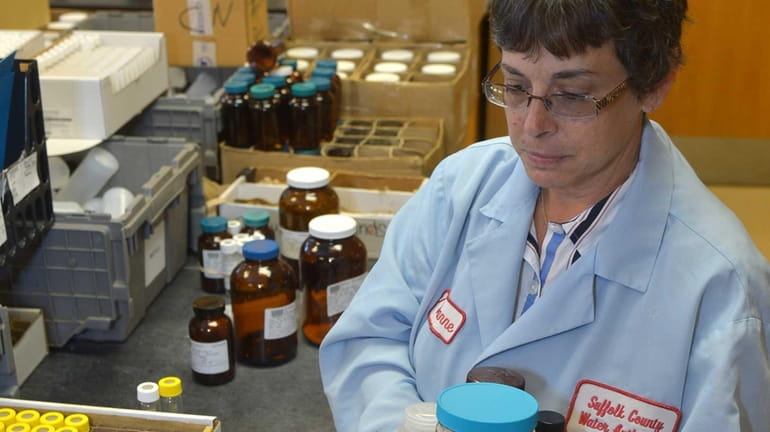Nassau dodges bullet with federal sewer money

Shown are digestor tanks at the Bay Park Sewage Treatment Plant in East Rockaway. At right is a 60-foot-high gas sphere on March 9, 2011. Credit: Kevin P. Coughlin
Nassau County dodged a bullet with the recent announcements that the Federal Emergency Management Agency would put more than $800 million toward repairing and rebuilding a sewage plant damaged by superstorm Sandy.
How big a bullet?
The county had intended to borrow more than $700 million to fix the tumbledown Bay Park Sewage Treatment plant first -- and then hope for significant federal reimbursement.
The borrowing -- which would have been the largest in county history -- would have strained Nassau's already fragile budget even more.
As it is, according to last week's Moody's Weekly Credit Outlook, Nassau's debt service as a percentage of county spending stands at a whopping 13.5 percent, the highest among similar counties in New York.
In Suffolk, the debt service as a percentage of spending is 4.8, which is more in line with Putnam, Westchester and other suburban counties.
So, with one significant financial hurdle cleared with promised money from FEMA and other federal sources, what should Nassau do next?
One good start would be to scuttle a complex proposal that called for selling the plant, along with the rest of Nassau's sewage treatment system.
The plan, which would include securing an investor to give cash-strapped Nassau almost a billion dollars upfront in the deal, was put on hold after Sandy.
But while county officials have discussed selling the facilities, the focus now is said to be on finding a private operator to manage them. That's a better plan.
One justification for the original proposal -- which was slammed by members of the Nassau Interim Finance Authority, a state board in control of the county's finances -- was that Nassau had no money to repair and rebuild its system, which for decades has been in disrepair.
During Sandy, a nine-foot wave of water knocked the Bay Park plant out for two days, leaving mostly untreated sewage leaking into Reynolds Channel.
The storm created a crisis, and Nassau officials feared that, despite short-term repairs, the plant could fail again.
The FEMA money will help the county's balance sheet -- and more importantly, Nassau's residents -- by funding repairs and fortifications of the plant against damage from future storms.
But a key issue -- extending the plant's outfall pipe beyond Reynolds Channel and into the Atlantic Ocean -- is unresolved. That would require millions of dollars more in federal funding for which county officials, rightly, will keep pressing.
The fate of one sewage treatment plant may not seem like a lot. But on Long Island -- where economic development in too much of Suffolk has been stalled because of the county's reliance on septic systems -- Bay Park is a gem.
FEMA's decision to fund repairs and rebuilding also could be a positive for Long Beach, where city and county officials are working on a proposal to turn the city's damaged plant into a pumping station that would transfer sewage to Bay Park.
But the federal money means even more than that: Fixing Bay Park also means addressing Nassau's largest public works and environmental problem. It's a rare opportunity for Nassau to put the plant right.

Updated now Newsday travel writer Scott Vogel took the ferry over to Block Island for a weekend of fun.

